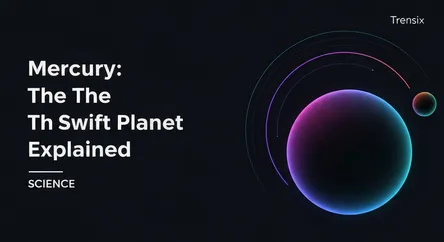Science
Mercury: The Swift Planet Explained

Discover Mercury, the smallest and fastest planet in our solar system. Learn about its extreme temperatures, cratered surface, and recent discoveries.
What is it?
Mercury is the smallest planet in our solar system and the closest to the Sun. Named after the swift Roman messenger god, it completes its orbit in just 88 Earth days. Its surface is heavily cratered, resembling Earth's Moon, and it experiences the most extreme temperature fluctuations of any planet, soaring to 430°C (800°F) during the day and plummeting to -180°C (-290°F) at night. Despite its proximity to the Sun, scientists have confirmed the presence of water ice in permanently shadowed craters at its poles. Mercury has a very thin atmosphere, called an exosphere, and a surprisingly large, dense iron core that makes up about 85% of the planet's radius.
Why is it trending?
Mercury remains a hot topic due to ongoing and recent space missions. The joint European-Japanese BepiColombo mission is currently en route to Mercury, performing flybys that provide new high-resolution images and data, generating excitement in the scientific community. It builds upon the legacy of NASA's MESSENGER mission, which orbited the planet from 2011 to 2015 and revolutionized our understanding of its geology, magnetic field, and composition, including the unexpected discovery of water ice and organic materials.
How does it affect people?
Studying Mercury is crucial for understanding how planets form and evolve, especially those orbiting close to their parent stars. It serves as a natural laboratory for testing fundamental physics, including Einstein's theory of general relativity, as its orbit provided early proof of the theory. For the public, Mercury fuels curiosity about our solar system's extremes and pushes the boundaries of space exploration technology. Its mysteries inspire a deeper appreciation for the volatile and dynamic nature of the cosmos and our place within it.